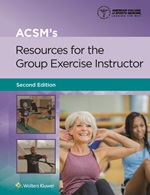Candice Campbell, M.S., CSCS, CES, ACSM-CPT |
June
21, 2022

Whether you are a seasoned fitness professional or a new trainer entering the field, it’s more important than ever to be versatile and competent in working with a variety of clientele. As our industry shifts with the needs and demands of the public, we want to be educated and experienced working with clients one on one, in small groups and large groups, or even in an online environment. Being a hybrid fitness professional not only makes you more hirable for an employer but also gives you the skill set and resources to know how to adapt workouts so they are effective, regardless of how much direct feedback you are able to provide.
My certifications as a group fitness instructor and a certified personal trainer have worked hand in hand to help me build my career. Not only have I had the ability to reach more individuals, but I have also improved upon coaching skills that serve me in every aspect of my career. Group fitness techniques have improved my ability to adapt workouts and develop effective cueing, and have served as a built-in referral system to grow my career as a personal trainer and beyond.
The challenges of teaching more than one person at a time are different from one-on-one training. You need to be cognizant that you are working with different fitness levels, different demographics and different learning styles. In the same class you can have someone who is taking their very first step into fitness right alongside someone who is looking for a class to take their fitness to the next level. Both individuals are looking to you for guidance and motivation. Improving group fitness knowledge enables you to identify these different levels and learn how to coach and adapt your workouts to meet the needs of everyone in the room.
Teaching group fitness has improved my skills with cueing and exercise demonstration. When working in a group, you are unable to use tactile cueing, and it can be difficult to stop or slow down the movements to work on technique. For this reason, it is imperative that you are able to use alternative cues that can help participants understand how an exercise should look and feel for them. With group fitness experience, I have developed a toolbox of effective cues that I use both with classes and with personal training clients. No matter how much direct contact I have with each client, I am better able to coach them to success due to my group exercise experience.
Any group fitness instructor can tell you that their class members are loyal. Within this setting you are able to build trust and rapport with participants so they feel connected and comfortable with the fitness professional. For those who are hoping to build a personal training career, this can be a valuable resource for finding potential clients without the need to market or advertise. Simply deliver a great group fitness class and allow those who attend to see how knowledgeable you are and how much you have to offer.
Being a hybrid fitness professional shows you have the knowledge, skills and abilities to work in more than one environment. This not only has helped build my confidence when working with clients, but it has made me more a more desirable candidate for employment since I am able to serve the facility in more than one department. Many of the gyms I have worked in have been able to benefit from hiring me as a hybrid fitness professional because I am competent in both environments and assist the two different departments in working together. Looking into the future, you may decide on a management role; possessing dual certifications will allow you to understand the needs and benefits of both departments, what skills to look for when hiring new candidates, and how to further the mission of the company.
As I look back, I can definitely say that holding both a group exercise instructor and personal training certification provided me opportunities that have advanced my career and earning potential.
Additional Resources:
Blog | A Day in the Life of a Group Exercise Instructor
Blog | 5 Skills of High Performers in the Fitness Industry

Don’t miss the second edition of ACSM’s Resources for the Group Exercise Instructor — available this summer! This updated edition is fully aligned with the eleventh edition of ACSM’s Guidelines for Exercise Testing and Prescription. It is an essential resource for undergraduate exercise science programs, students in pre-professional programs and those independently preparing for the ACSM Group Exercise Instructor (ACSM-GEI) certification. This new edition of ACSM’s Resources for the Group Exercise Instructor highlights the skills needed to effectively lead group exercise in gyms, studios, recreational facilities and clubs.
 Candice Campbell, M.S., CSCS, CES, ACSM-CPT, is a full-time lecturer in the Department of Kinesiology at California State University, Long Beach, where she teaches in the Fitness and Integrated Training Bachelor of Science degree program. She has been a certified personal trainer for 15 years, with a specialized focus on clients with unique health considerations. She is the program director at the Shore Strength Lab, a small group-training facility in Long Beach, California, and has taught group fitness for over 14 years. She has also enjoyed participating in fitness research and program development for several health and fitness companies, and currently serves on the ACSM Certification and Registry Board Certified Personal Trainer Committee.
Candice Campbell, M.S., CSCS, CES, ACSM-CPT, is a full-time lecturer in the Department of Kinesiology at California State University, Long Beach, where she teaches in the Fitness and Integrated Training Bachelor of Science degree program. She has been a certified personal trainer for 15 years, with a specialized focus on clients with unique health considerations. She is the program director at the Shore Strength Lab, a small group-training facility in Long Beach, California, and has taught group fitness for over 14 years. She has also enjoyed participating in fitness research and program development for several health and fitness companies, and currently serves on the ACSM Certification and Registry Board Certified Personal Trainer Committee.